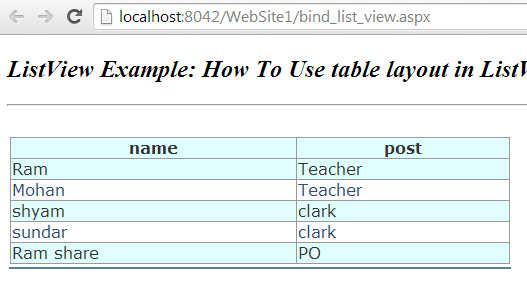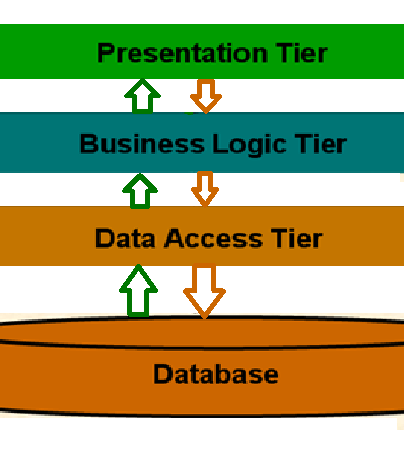In Asp.net Receiving AngularJS $http.post data using Request
Receiving AngularJS $http.post data using Request.Form in asp.net:
AngularJS is a structural framework for dynamic web apps. It lets you use HTML as your template language and lets you extend HTML's syntax to express your application's components clearly and succinctly.
AngularJS
has $http service that is used to send asynchronous request to the server.
$http service has many shortcut methods for different types of request we want
to send. For example
- $http.get
- $http.post
- $http.put
etc.
All works fine until we try $http.post method as this is little tricky. After searching internet, normally we find following ind of questions
- $http.post returns null on the
server
- $http.post doesn't send form
data on the server
- $http:post sends null data on
the server
It took more than an
hour to find how to retrieve $http.post sent data to the server using
Request.Form["keyName"] as we normally retrieve HTML form data on the
server in ASP.NET / ASP.NET MVC.
Sending POST request using AngularJS $http.post
$http.post method
accepts following parameters
- url - url to send request to
- data - data to send along with
request
- config - configuration to use
while sending request.
Once the request is
successful, the success() method fires if not error() method fires. Both has 4 parameters
- data - data returned from the
server
- status - status of the request
- headers - header information
returned from the server
- config - configuration returned
from the server
We mostly use only 1st and 2nd parameters to get the response from the server
and know the status respectively.
Plug-ins required to run this
- jquery.js - we need to have
jQuery file referenced in the page
- angular.js - we need to have
angular.js file referenced in the page
AngularJS HTML Form
In HTML form below, we
have used the ng-app, ng-controller declared in the <script> block of the
page. Three text boxes are using firstName, lastName and age as their ng-model.
On Submit button click, the form gets submitted. Because the HTML form uses
ng-submit directive so it calls SendHttpPostData function declared in the HttpPostController
controller.
<div ng-app="myApp" ng-controller="HttpPostController">
<form ng-submit="SendHttpPostData()">
<p>First Name: <input type="text" name="firstName" ng-model="firstName" required /></p>
<p>Last Name: <input type="text" name="lastName" ng-model="lastName" required /></p>
<p>Age : <input type="number" name="age" ng-model="age" required /></p>
<input type="submit" value="Submit" />
<hr />
{{ ServerResponse }}
</form>
</div>
<form ng-submit="SendHttpPostData()">
<p>First Name: <input type="text" name="firstName" ng-model="firstName" required /></p>
<p>Last Name: <input type="text" name="lastName" ng-model="lastName" required /></p>
<p>Age : <input type="number" name="age" ng-model="age" required /></p>
<input type="submit" value="Submit" />
<hr />
{{ ServerResponse }}
</form>
</div>
JQuery related Posts:



Comments
Post a Comment